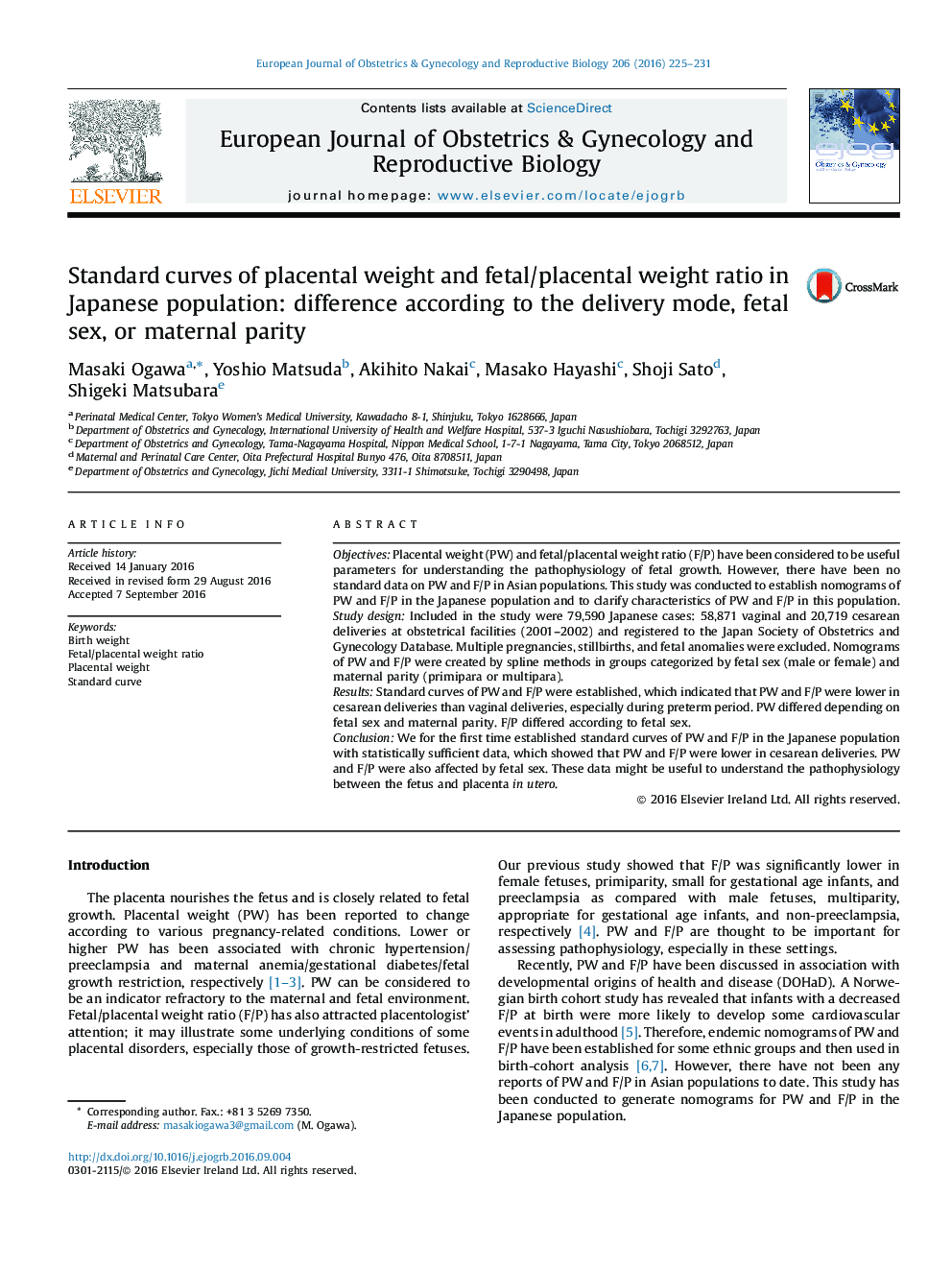| Article ID | Journal | Published Year | Pages | File Type |
|---|---|---|---|---|
| 6172425 | European Journal of Obstetrics & Gynecology and Reproductive Biology | 2016 | 7 Pages |
ObjectivesPlacental weight (PW) and fetal/placental weight ratio (F/P) have been considered to be useful parameters for understanding the pathophysiology of fetal growth. However, there have been no standard data on PW and F/P in Asian populations. This study was conducted to establish nomograms of PW and F/P in the Japanese population and to clarify characteristics of PW and F/P in this population.Study designIncluded in the study were 79,590 Japanese cases: 58,871 vaginal and 20,719 cesarean deliveries at obstetrical facilities (2001-2002) and registered to the Japan Society of Obstetrics and Gynecology Database. Multiple pregnancies, stillbirths, and fetal anomalies were excluded. Nomograms of PW and F/P were created by spline methods in groups categorized by fetal sex (male or female) and maternal parity (primipara or multipara).ResultsStandard curves of PW and F/P were established, which indicated that PW and F/P were lower in cesarean deliveries than vaginal deliveries, especially during preterm period. PW differed depending on fetal sex and maternal parity. F/P differed according to fetal sex.ConclusionWe for the first time established standard curves of PW and F/P in the Japanese population with statistically sufficient data, which showed that PW and F/P were lower in cesarean deliveries. PW and F/P were also affected by fetal sex. These data might be useful to understand the pathophysiology between the fetus and placenta in utero.
